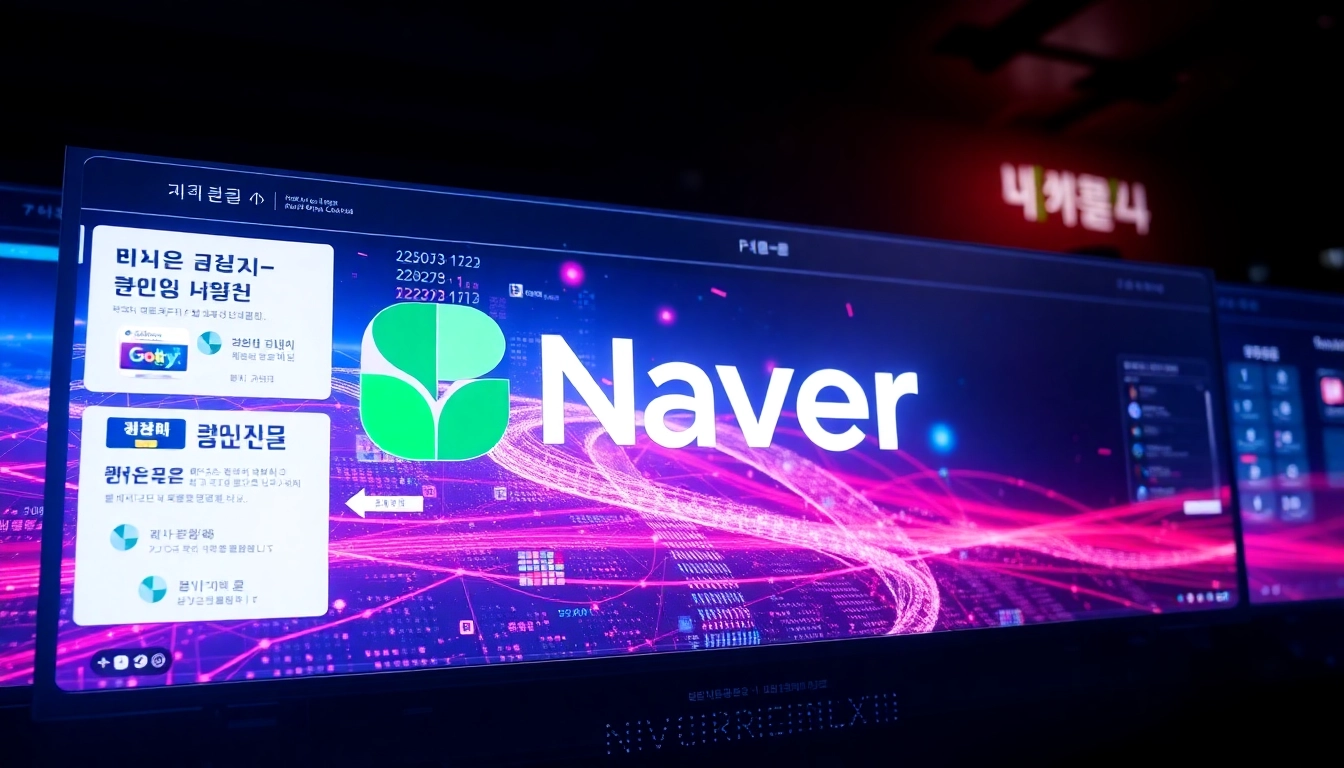Naver: South Korea’s Leading Digital Platform Driving Online Innovation
Understanding Naver’s Role in South Korea’s Digital Ecosystem
Naver, established in June 1999 by Lee Hae-jin, stands as South Korea’s pioneering and most influential online platform. Operated by Naver Corporation and headquartered in Seongnam-si, Naver has grown from a simple search engine into a multifaceted digital ecosystem that underpins daily life for millions of Koreans. Its comprehensive suite of services includes a leading search engine, email hosting, blogs, maps, mobile payment systems, and entertainment platforms such as webtoons and web novels. This broad array of services has cemented Naver’s position as an integral part of South Korea’s internet infrastructure, shaping how users access information, communicate, and entertain themselves.
For overseas digital entrepreneurs and content creators aiming to penetrate the South Korean market, understanding Naver’s unique ecosystem is crucial. This platform’s dominance isn’t solely due to its user base but also its sophisticated algorithms, localized content strategies, and integration of AI technologies. If you aim to establish a robust online presence in Korea, leveraging Naver’s ecosystem effectively can lead to significant competitive advantages. To explore how your business can succeed there, visit naver.
History and Evolution of Naver
Launched in mid-1999, Naver was developed during a pivotal time in South Korea’s internet growth. Initially positioned as a search engine tailored specifically for Korean language and culture, Naver quickly garnered trust and loyalty from local users. Its founders understood the importance of cultural localization long before it became a global trend, integrating Korean semantics, idiomatic expressions, and local news sources into the platform.
Over the years, Naver expanded its services, acquiring and developing a range of platforms to keep pace with technological advances and user needs. The early 2000s saw the introduction of Naver blogs and launched Naver Café, fostering community engagement. In 2006, Naver Maps was introduced, becoming a go-to navigation tool, while the rise of mobile usage prompted the development of highly optimized apps, including Naver Search, Naver Map, and Naver Webtoon. The company’s continuous innovation, fueled by investment in AI and machine learning, has allowed Naver to maintain its dominance amid increasing regional competition from global giants like Google and local challengers.
Naver’s evolution reflects a strategic shift from a simple search portal to a comprehensive platform, integrating social, entertainment, commerce, and AI-driven services. Its growth trajectory exemplifies responsive adaptation to shifts in user behavior and technological trends, especially in smartphone usage and multimedia consumption.
Naver’s Core Services and Products
Search Engine and Knowledge Platform
At its core, Naver is South Korea’s most popular search engine, tailored to support complex Korean language queries with high precision. Naver’s search results integrate news, blogs, cafes, and web pages, providing users with a rich, layered experience. Its AI-powered query understanding and personalized recommendations serve to enhance accuracy and user engagement.
Content Creation: Blogs, Webtoons, and Web Novels
Naver’s blogging platform fosters user-generated content, allowing individuals and influencers to cultivate personal brands and communities. Naver Webtoon has revolutionized digital comics, hosting millions of readers and fostering local and international artists. Web novels, a growing sector, attract avid readers seeking serialized stories, further expanding Naver’s entertainment portfolio.
Navigation and Location-based Services
Naver Maps offers real-time traffic updates, navigation, and location-based information tailored for Korean roads and urban landscapes. Its seamless integration with other Naver services enables users to find nearby restaurants, stores, and attractions, making it an indispensable tool for daily commuting and travel planning.
Mobile Payment and E-commerce
Naver Pay facilitates cashless transactions within Naver’s ecosystem, supporting online shopping, peer-to-peer transfers, and various affiliate services. Naver Shopping provides a comprehensive marketplace for both well-known retailers and small businesses, leveraging targeted advertising and recommendation algorithms.
AI and Next-Generation Technologies
Naver invests heavily in AI, cloud computing, and robotics, aiming to develop next-generation intelligent services. Naver Labs focuses on autonomous vehicles, virtual assistants, and smart home integrations, positioning Naver as a technology innovator beyond its original portal roots.
Market Position and Competitive Advantages
Naver maintains a dominant market share in South Korea, often cited as surpassing 70% in local search engine usage. Its comprehensive localization, cultural relevance, and user interface design give it an edge over global competitors like Google. Furthermore, Naver’s integration of community features like cafes and blogs fosters high user loyalty and time-on-site metrics, critical for monetization.
Its strategic investments in AI and multimedia content have permitted sustained growth, particularly in entertainment sectors such as webtoons and web novels, which are less developed on international platforms. Naver also benefits from its vertically integrated ecosystem, reducing dependency on external third-party services.
This ecosystem’s advantages lead to increased user engagement, higher advertising revenue, and a competitive moat that difficult rivals struggle to breach in the Korean market.
Optimizing Content for Naver Search
To effectively leverage Naver for online visibility, understanding its unique search algorithm is essential. Unlike Google, Naver emphasizes local content relevance, user engagement metrics, and content freshness. Optimizing for Naver requires a nuanced approach:
- Localization: Content should be tailored to Korean culture, language nuances, and trending topics.
- Keyword Optimization: Use Korean keywords naturally within titles and content. Naver’s search favors contextual relevance over keyword density.
- Content Freshness: Regularly updating blogs, news, and Q&A sections can boost rankings.
- Utilize Naver’s Content Ecosystem: Incorporate Naver’s blogging platform, Webtoon, and news to diversify traffic sources.
Practical steps include creating high-quality, culturally relevant blog posts, leveraging keywords in comments, and engaging actively within Naver cafés or communities to enhance visibility.
Naver Blog and Webtoon Engagement Strategies
Successful engagement on Naver blogs and Webtoon involves consistent content creation, community interaction, and strategic branding. For blogs, translating trending topics into valuable insights or region-specific issues increases readership. For Webtoons, collaborating with popular artists or offering exclusive content can attract loyal fans.
Promoting content across other Naver services and third-party social platforms can also expand reach. Additionally, utilizing analytics tools to monitor viewer preferences allows content creators to adapt and improve engagement over time.
Utilizing Naver Maps and Mobile Apps
Naver’s mobile applications, particularly Naver Map, are vital for location-centric marketing and consumer engagement. Businesses can register their locations on Naver Map, optimizing their listings with photos, menus, and special offers. This ensures higher visibility for users conducting local searches.
For app developers, integrating Naver’s APIs provides seamless content delivery, navigation, and localized recommendations. Businesses should also focus on app optimization—reducing load times, ensuring stability, and regularly updating content—to maximize user satisfaction and retention.
Strategies for Businesses to Succeed on Naver
Creating Appealing Naver Business Profiles
A well-optimized Naver Business Profile is key to local visibility. Include detailed descriptions, accurate contact information, operational hours, and compelling images. Engaging profile content increases trust and conversions.
Advertising Solutions and Ad Placement
Naver offers targeted advertising options, including Naver Power Link, display ads, and product placement within search results. Data-driven ad strategies, audience segmentation, and retargeting can enhance ROI significantly.
Analytics and Performance Monitoring on Naver
Utilize Naver Analytics to track traffic, user engagement, and conversion metrics. Regular analysis helps refine SEO strategies, advertising campaigns, and content development, allowing for continuous growth.
Naver’s Future Directions and Innovations
Upcoming Technologies and AI Integration
Naver is investing heavily in AI, aiming to develop virtual assistants, personalized content curation, and autonomous vehicle technologies. Its AI-powered search improvements will further personalize user experiences, driving deeper engagement.
Naver’s Expansion into Global Markets
While primarily focused on Korea, Naver is exploring regional partnerships and expanding its presence in Southeast Asia and beyond. Its global expansion strategy involves adaption of services to meet local needs and cultural nuances.
Emerging Trends in Platform Development
Trends include increased integration of AI chatbots, real-time interactive content, and augmented reality applications. Naver aims to maintain its innovation edge by staying ahead in the digital transformation curve.
Overcoming Challenges and Maximizing Opportunities on Naver
Addressing Algorithm Changes and SEO Updates
Constant algorithm adjustments require adaptive strategies. Focus on creating high-quality, user-centered content, and stay updated on Naver’s official SEO guidelines to prevent ranking drops.
Dealing with Competitive Content and Market Shifts
Content saturation presents challenges; therefore, businesses must differentiate through innovative content formats, community engagement, and leveraging niche topics.
Harnessing Data Insights for Growth
Data analytics enables precise targeting, customer segmentation, and performance tracking. Investing in advanced analytics tools ensures your strategies remain effective and aligned with evolving user preferences.










